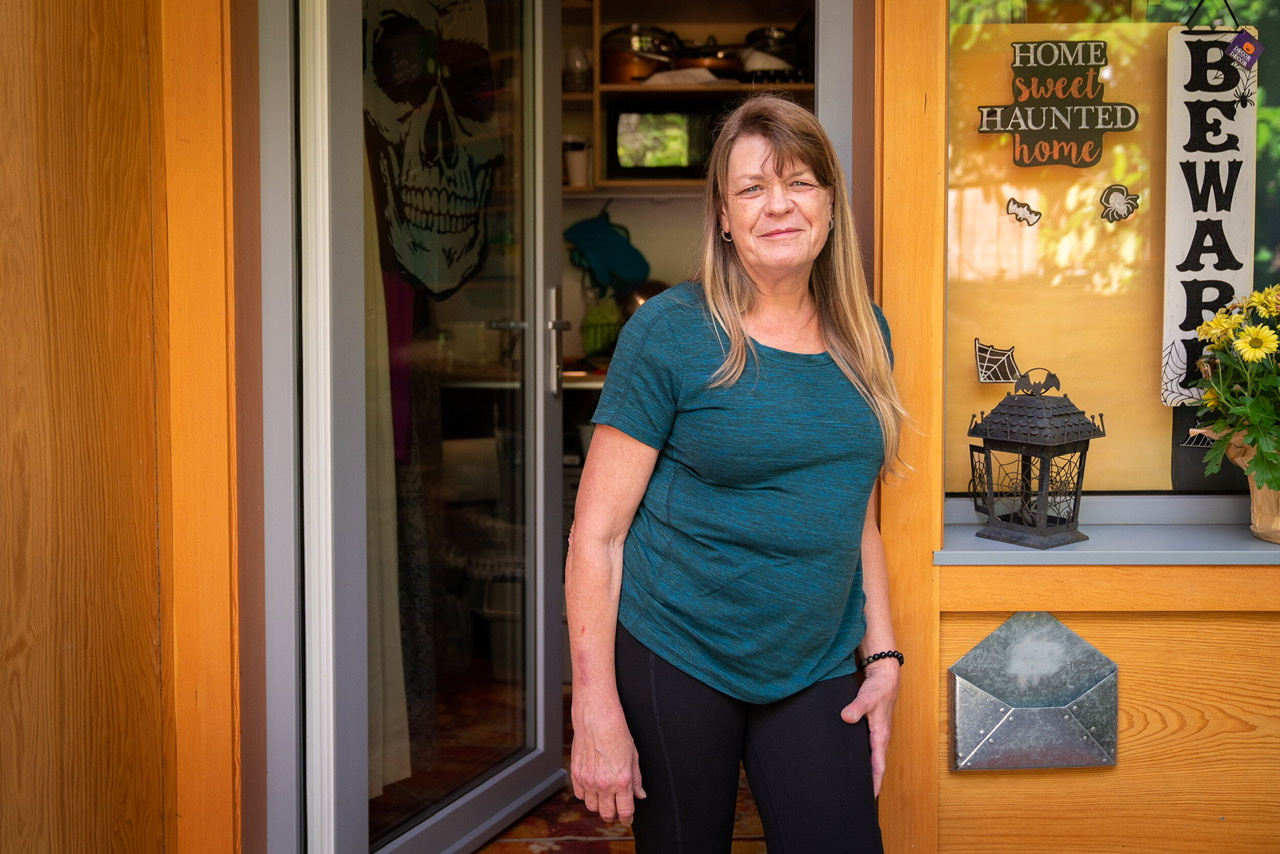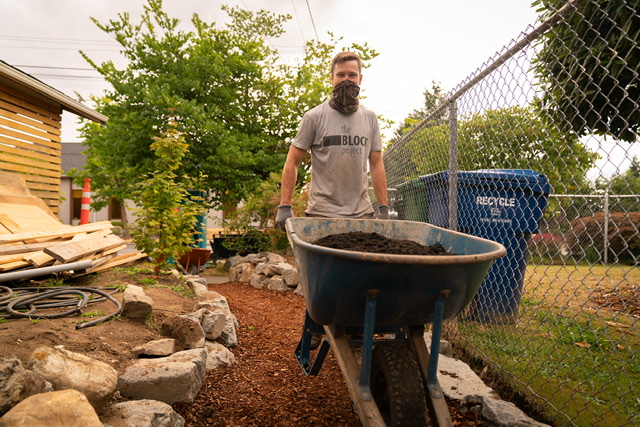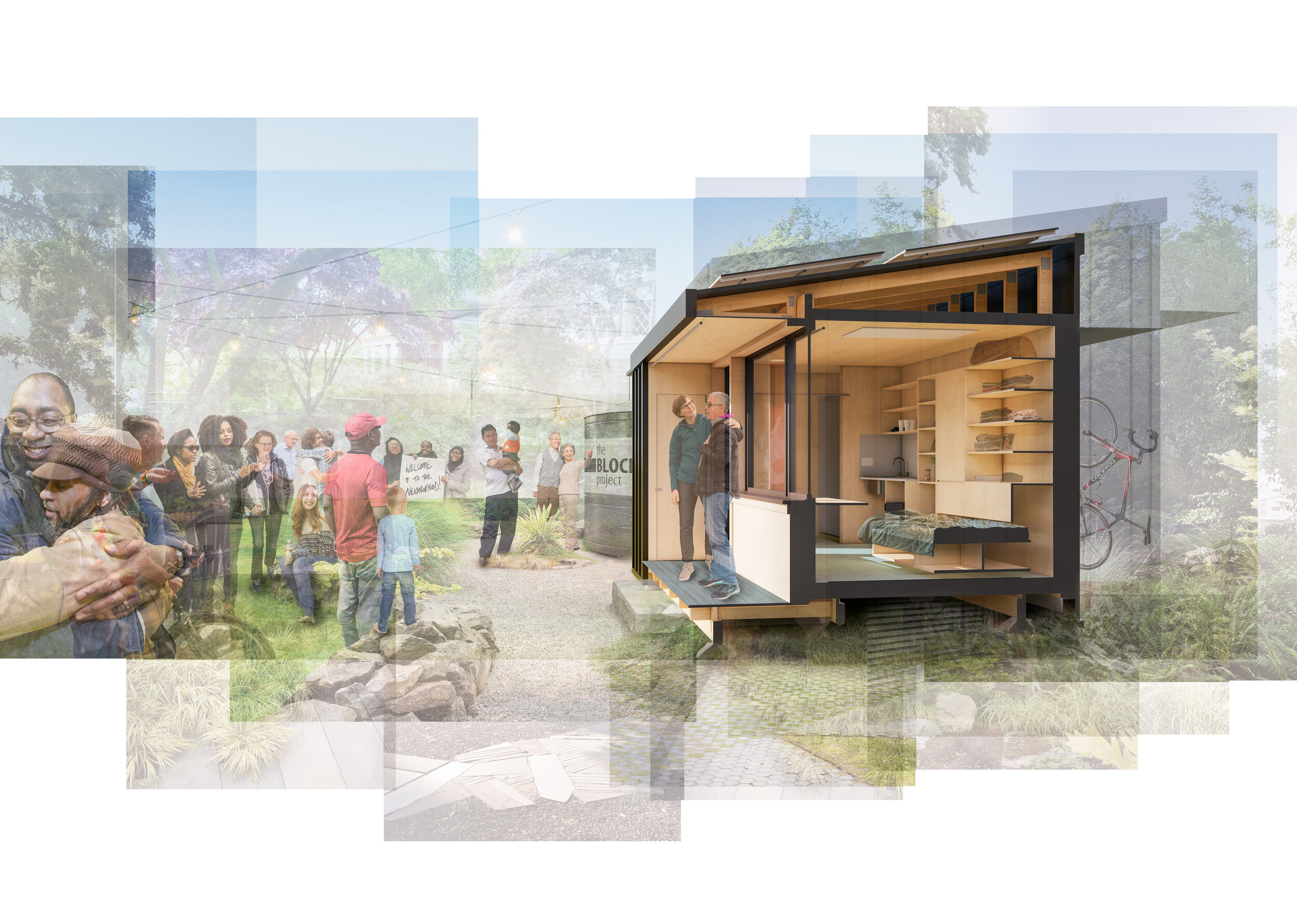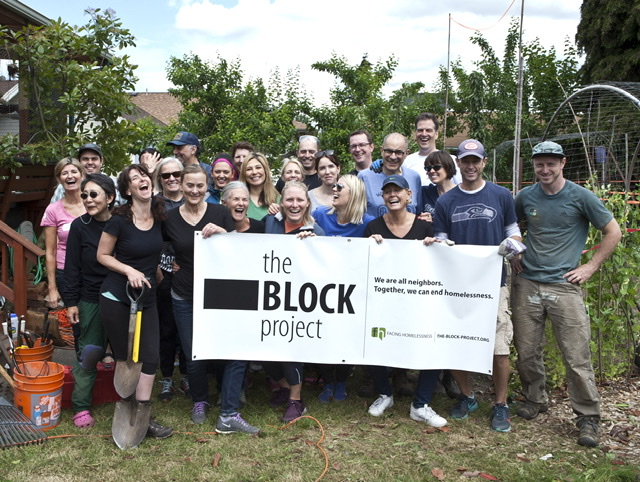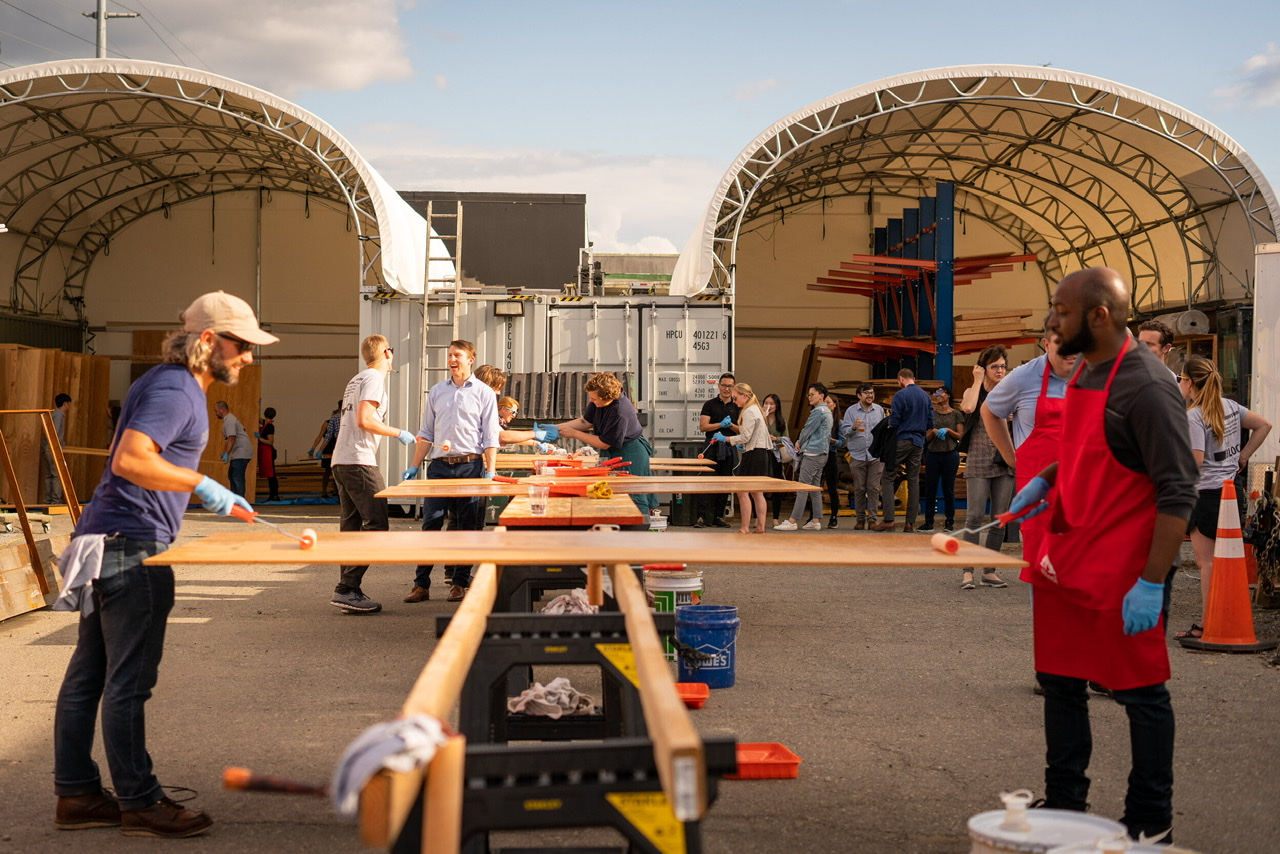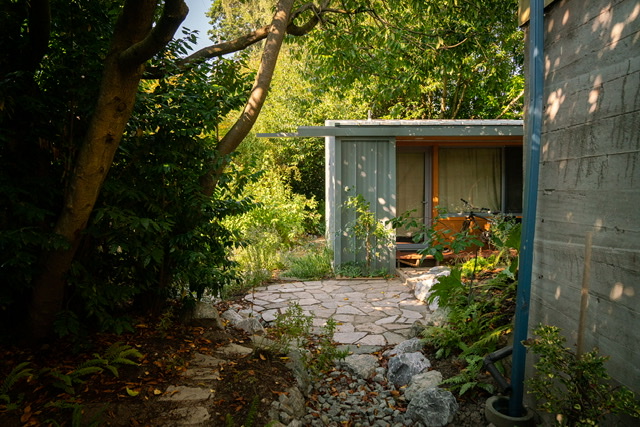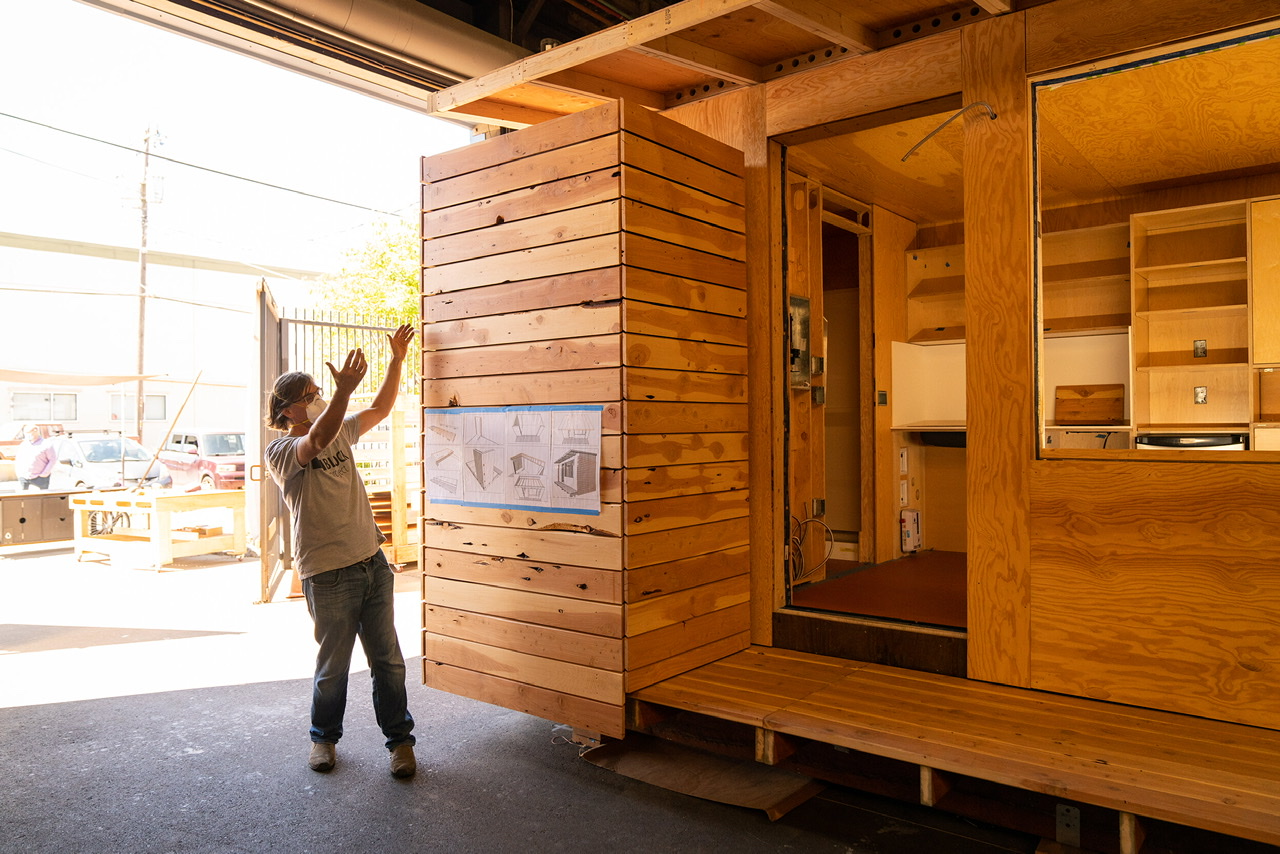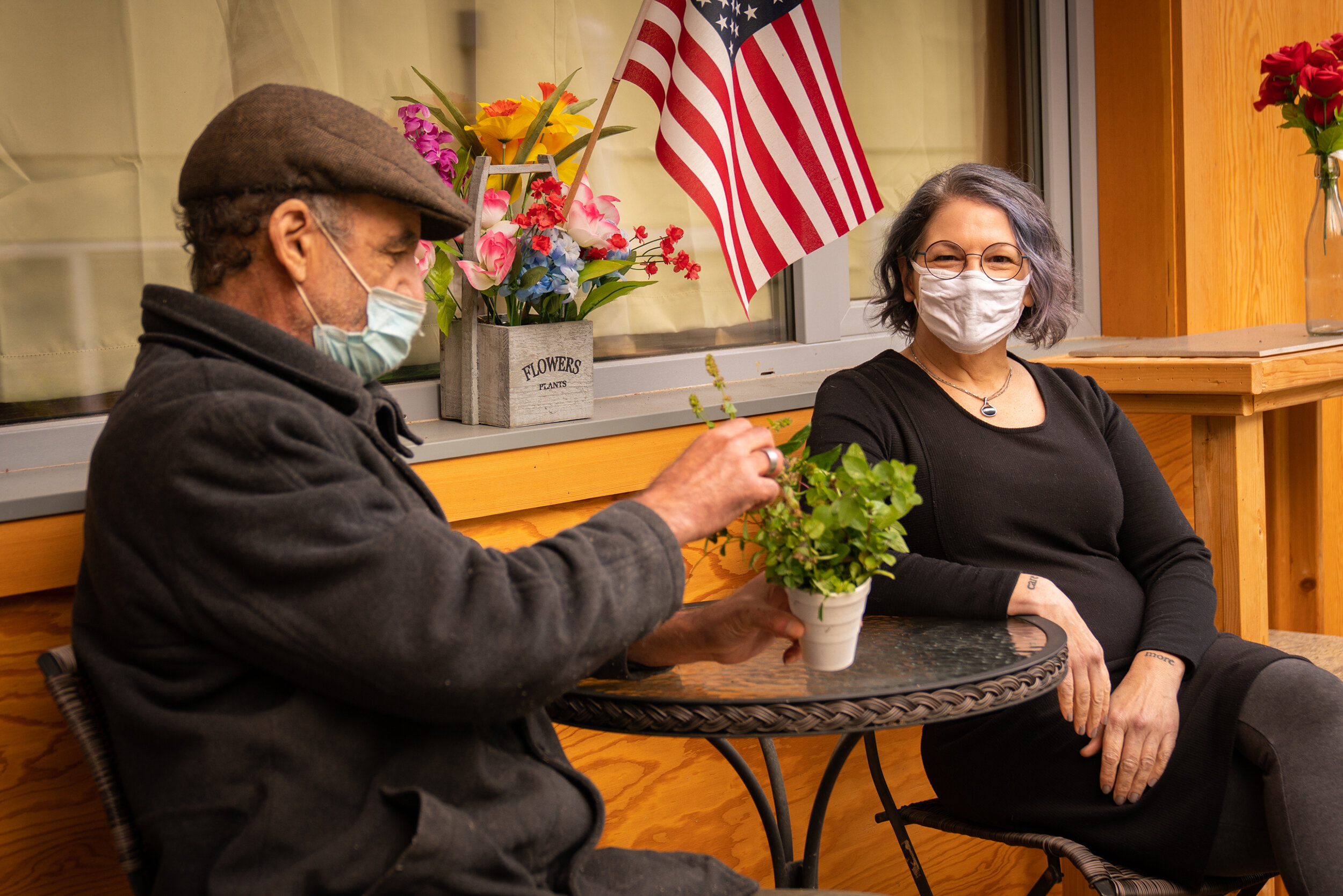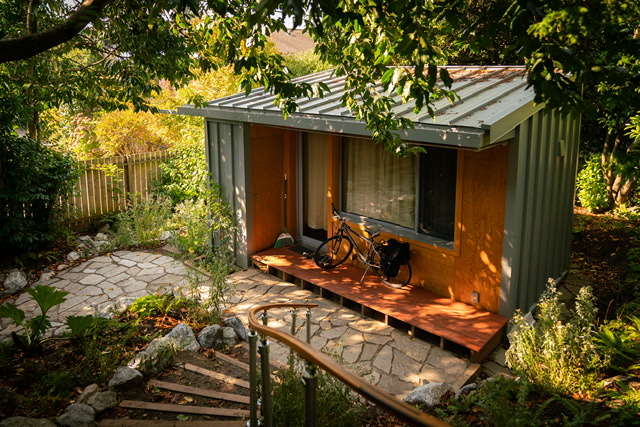
- Better Society -
- 8mins -
- 1,525 views
Seattle homeowners volunteer their backyards for tiny homes for unhoused neighbours
The Block Project program has so far housed 12 people in private backyards and there are plans to grow.
so much more than building homes for those living outside
The Block Project builds fully equipped, healthy homes for people experiencing homelessness. BLOCK Homes are permitted and placed in homeowners’ backyards throughout Seattle. This model gives residents a place to call home and communities around the city an opportunity to make a real difference in supporting their unhoused neighbours and addressing the issue of homelessness together.

The tiny houses, at only 125 sq/ft (11.6 sq/m), have kitchen areas, bathrooms, a sleeping area, and a small covered front porch. They’re designed to the strict sustainability standards of the Living Building Challenge, with features like solar power and rainwater capture and purification. Source: The-Block-Project.org
A new approach is needed To address homelessness
Seattle-based The BLOCK project builds homes for those living on the streets, and they are taking a bold stand: they say we will never end homelessness through housing alone. A new approach is needed, one that acknowledges that relationships are the building blocks for healing our communities and that we can no longer see those who are homeless as ‘other’.
This bold new model invites all of us to step forward with our own abilities to create societal change.
The vision is to help end homelessness by building a BLOCK Home and thriving community on every residential block in Seattle. The model will be accessible nationwide and create a foundation of compassion and empathy for future generations.
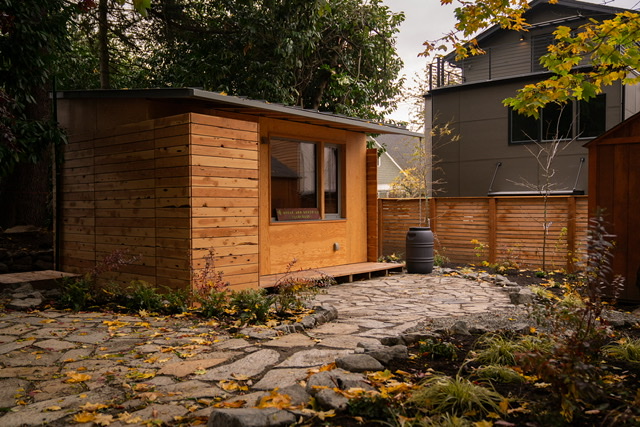
When a homeowner applies to participate, Facing Homelessness evaluates the yard to see if it meets the city’s permitting requirements for a backyard home, and then interviews the homeowners. To avoid raising the homeowners’ property tax, the nonprofit retains ownership of the tiny house and leases a portion of the backyard for free in five-year stints, with the hope that the homeowner will continue to renew. Source: The-Block-Project.org
bold new model invites all of us to step forward to create societal change
This bold new model invites all of us to step forward with our own abilities to create societal change. The vision is to help end homelessness by building a BLOCK Home and thriving community on every residential block in Seattle. The model will be accessible nationwide and create a foundation of compassion and empathy for future generations.
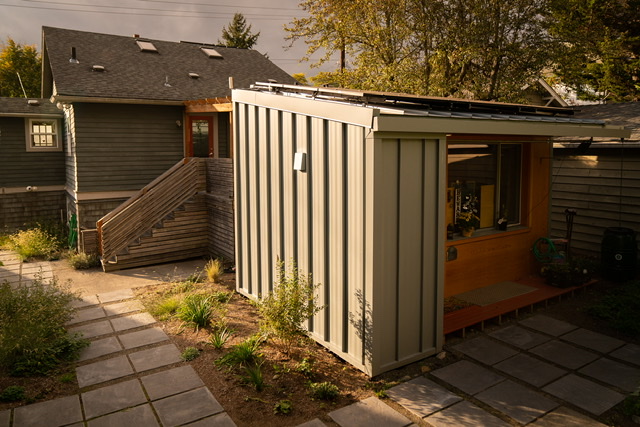
When a homeowner applies to participate, Facing Homelessness evaluates the yard to see if it meets the city’s permitting requirements for a backyard home, and then interviews the homeowners. To avoid raising the homeowners’ property tax, the nonprofit retains ownership of the tiny house and leases a portion of the backyard for free in five-year stints, with the hope that the homeowner will continue to renew. Source: The-Block-Project.org
“Yes, in our backyard!” — The five core beliefs of the block project
The BLOCK Project has five core beliefs that have helped shape it and will continue to guide it’s path forward:
INTEGRATED | Segregation perpetuates disadvantage. By building homes for those experiencing homelessness in residential backyards, The BLOCK Project fosters cross-class integration and social inclusion. The entire community is invited to be a part of the solution, and those formerly experiencing homelessness increase their proximity to new resources – and relationships – that aid healing.
SUSTAINABLE | BLOCK Homes are designed to achieve the highest standard for sustainability in the built environment (Living Building Challenge). The buildings will “give more than they take”, creating a positive impact on human and natural systems.
SUPPORTED | Homelessness is traumatic. The BLOCK Project creates an intentional network of support for each resident, including professional social services, thoughtfully matched hosts, and engaged neighbours. The BLOCK Project is introduced to every neighbour on the block and only integrates with a collective “Yes, in our backyard.”
AFFORDABLE | The barriers to developing traditional low-income permanent housing are high. The BLOCK Project makes use of the under-utilised, available property and leverages the community’s desire to get involved to dramatically reduce the cost of housing.
DIGNIFIED | Our built environment shapes who we are and how we live. BLOCK Homes are permanent, sophisticated dwelling units designed to provide stability for residents as they define and achieve success. BLOCK Residents will often live in the most advanced house on their block, inviting them to educate their neighbours about sustainable living.
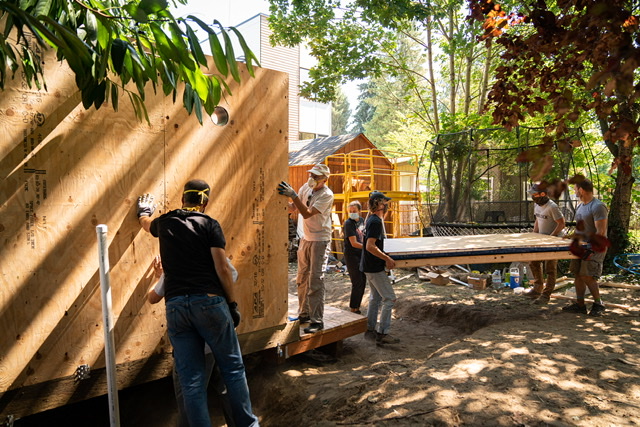
Agencies refer unhoused people who they believe would be a good fit for the program, and Facing Homelessness serves as a matchmaker. The nonprofit also meets with neighbours to help allay fears that may be based on stereotypes about homelessness. The homeowner acting as a host can also be an advocate, drawing on their own relationships with neighbors to help make the case for the housing. Source: The-Block-Project.org
How it started
It began four years ago, when the owners of a small single-family house in Seattle decided to volunteer the use of their backyard for something new: They let a nonprofit build a tiny sustainable home in the yard and helped a man who had been homeless for a decade move in, rent-free. He still lives there, having built a close relationship with the homeowners. And 11 other homeowners have since followed suit, in this small but growing program called the Block Project.
“The community has to get involved if we’re going to end homelessness,” said Rex Hohlbein, in a recent interview with FastCompany. Hohlbein is an architect whose career slowly transitioned to tackling homelessness after befriending an unhoused artist in front of his architecture studio, and who eventually started the Block Project.
“It’s way too complicated to just have a government program. It’s really a whole shift in how a community acts and moves forward addressing the needs of the most vulnerable.”
Hohlbein launched a nonprofit called Facing Homelessness in 2013, and then, along with his daughter, architect Jenn LaFreniere, came up with a somewhat radical idea. If it’s hard to build supportive affordable housing in a city like Seattle, where land is expensive and large construction projects can take years, why not ask local residents to share their backyards directly?
The city already had zoning laws that allowed “accessory dwelling units,” or backyard houses. As the concept of using backyard houses for homeless housing progressed, the city planning department helped provide support to make it as simple as possible for people to build.
The program isn’t intended for everyone experiencing homelessness. Someone with severe mental health issues would be better off in another setting that offers more services, for example. But for others, it’s a way to have stable housing and connect with neighbours in an area where they otherwise wouldn’t have been able to live.
Source: FastCompany
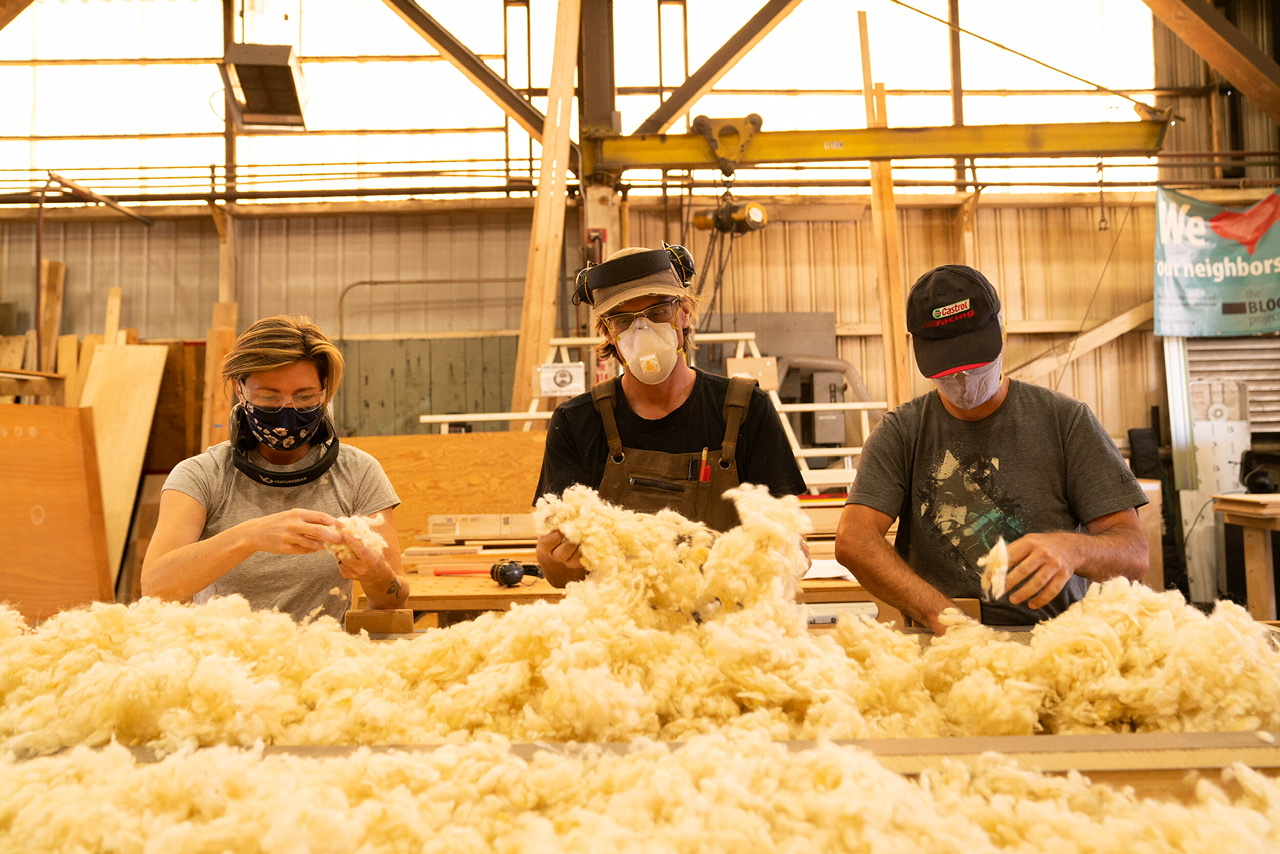
Everything is built in the Block shop through the use of jigs, which allows volunteers to come and build the panels without any construction knowledge. The nonprofit works with local plumbers and electricians to set up utilities, and provides basic furnishings, including a bed frame and mattress, fold-up desk, fridge, and hot plate. Source: The-Block-Project.org
Learn more about that the Block project can offer
- HOSTING: the project offers homeowners a program to host someone experiencing homelessness by simply donating a portion of their backyard and welcoming a new neighbour. Meet the hosts!
- SUSTAINABILITY: they build healthy homes to support wellness for our residents, while positively impacting people, planet, and future generations. Learn more about their healthy building practices.
- PARTNERS: they involve businesses and individuals who want to support their mission through their unique skills, passions, and resources. Meet their team of partners.
- VOLUNTEER: they are community powered! Homes are built and backyards landscaped by a network of volunteers and skilled professionals. Volunteer!
- SOCIAL SERVICES: they partner with social service agencies for referrals to thoughtfully match hosts and formerly homeless residents. Check out the resident FAQs.
- RELATIONSHIPS: they maintain relationships and provide ongoing support to hosts, neighbours, and residents to bring everyone closer to each other. Learn more about Facing Homelessness.
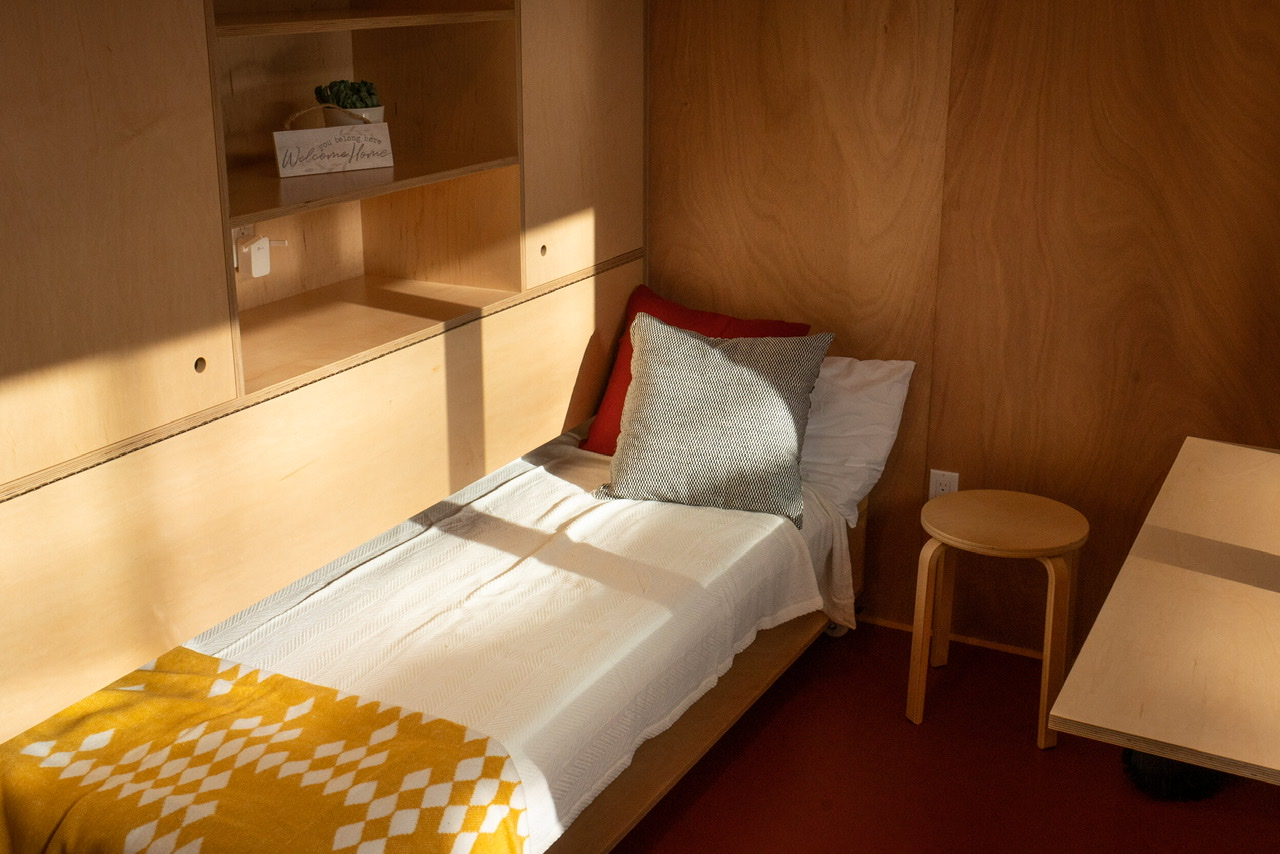
Home Sweet Home ❤️ A “Welcome Home Kit” fundraised with the community offers other essential items like curtains, pots and pans, silverware, bedding, cleaning supplies, and shampoo. Source: The-Block-Project.org
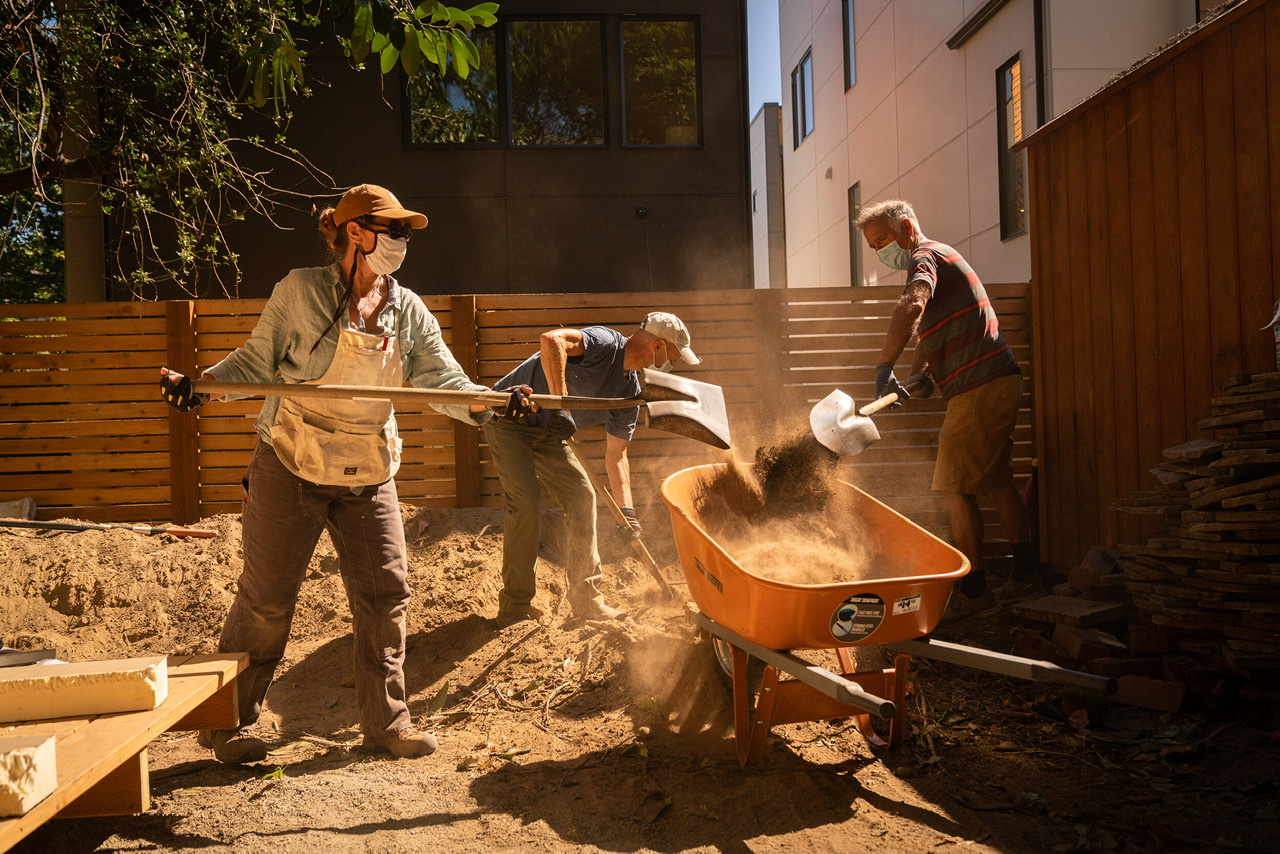
The work is slow but rewarding. Though the original vision was to install a tiny house on every block—which could create enough housing for almost every person experiencing homelessness in the city—the nonprofit plans to grow slowly. Source: The-Block-Project.org
